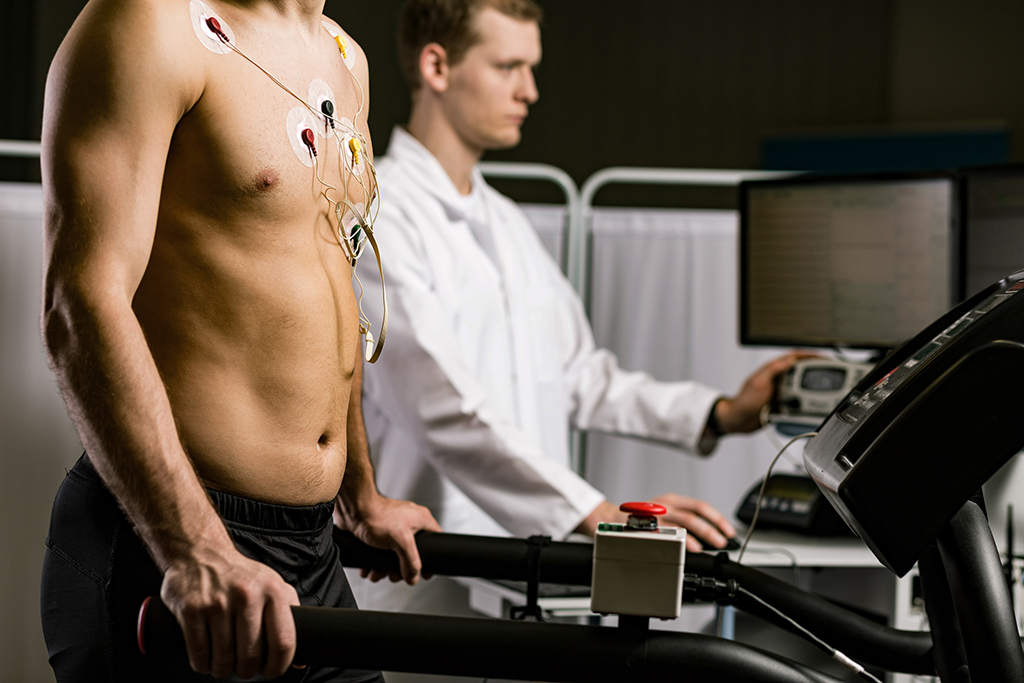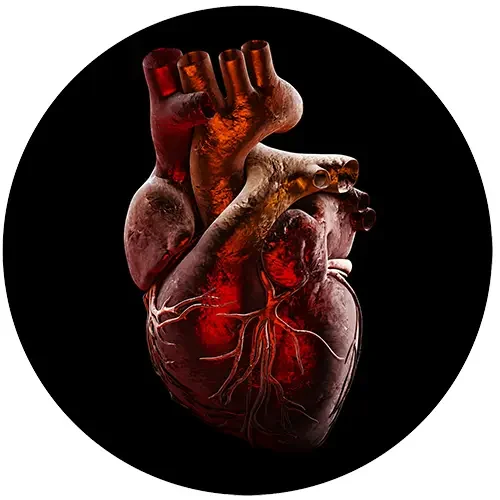The simplest form of the test is that EKGs are taken while you are exercising. Usually exercise is on a treadmill or stationary bike. Your blood pressure and breathing are also monitored throughout. If you are unable to exercise, a drug can be used to simulate the effects of exercise on the heart. Some changes in the EKG show a limited blood supply to the heart muscle. Others show abnormal heart rhythms or rates. In a nuclear stress test (thallium stress test), roughly the same procedure is followed, but a radioactive dye is injected so that images can be made of blood flow to the heart before and after exercise. This sort of stress test thus provides more direct information about blood flow to the heart muscle.
One thing that can be confusing is that "stress test" is sometimes used to mean a stress echocardiogram. Both involve exercise, but the things that are measured are different.
Before the test, your doctor will give you specific instructions as to how to prepare. You may be required to not eat, drink, and smoke for a few hours before the stress test. They may also ask you to avoid caffeine the day before and the day of your test. Your doctor will tell you if you should take your normal medications before the test. If you have asthma or other breathing problems and have an inhaler, bring it to the test. Make sure to tell your doctor as well as those monitoring you during the test that you have it. Wear comfortable clothes and walking shoes to the test. If you are having a nuclear stress test, do not apply lotion or oil to your skin on that day.
A typical stress test will take about an hour, including prep time and the actual test. The actual test only takes about 15 minutes. Before the test, your doctor will ask about your medical history and exercise habits including how physically active you are. Answering these truthfully will allow the doctor to determine the appropriate amount of exercise for you. Your doctor will listen for abnormalities in your heart and lungs that may affect results. As with any EKG, a technician will place electrodes onto your chest, arms, and legs. You will also wear a blood pressure cuff on your arm throughout the test. You may be asked to breathe into a tube to see how well you are able to breathe during exercise. The speed of the treadmill or bike will be slow at first and be increased slowly. You are allowed to use the railings for support and balance. Do not hold on too tightly because it may affect results. You will be asked to continue exercising until your heart rate has reached a certain threshold or until you have developed symptoms like chest pain, shortness of breath, dizziness/fatigue, or an abnormal heart rhythm. You can stop the test at any time if you are not comfortable continuing. As mentioned above, your doctor may inject a drug into your IV if you are unable to exercise; the drug causes your heart to act as though it were exercising. This is a strange experience for many people. You are not moving but you may feel flushed, your heart rate will increase, and you may be short of breath, and may get a headache - just like during exercise. After you stop exercising or when the effects of the drug dwindle, you may be asked to stand still for a short amount of time and then lie down with the electrodes still on you. During this time, your doctor will watch for any abnormalities as your heart rate and breathing return to normal. After the test, you can resume normal activities unless your doctor tells you not to.
There are usually no serious risks associated with stress tests. There will be medical personnel - highly trained to handle cardiac emergencies - present in the room. The exercise or medication can sometimes cause chest pain, dizziness, or nausea. You will be consistently monitored during the test in case any complication happens so that you can receive prompt treatment.










